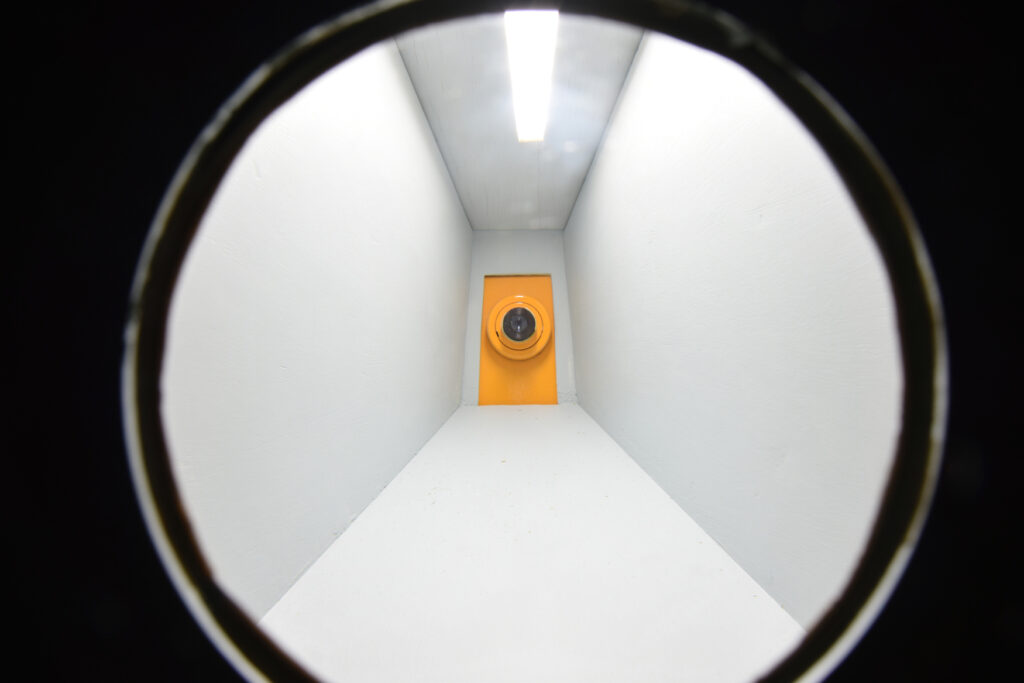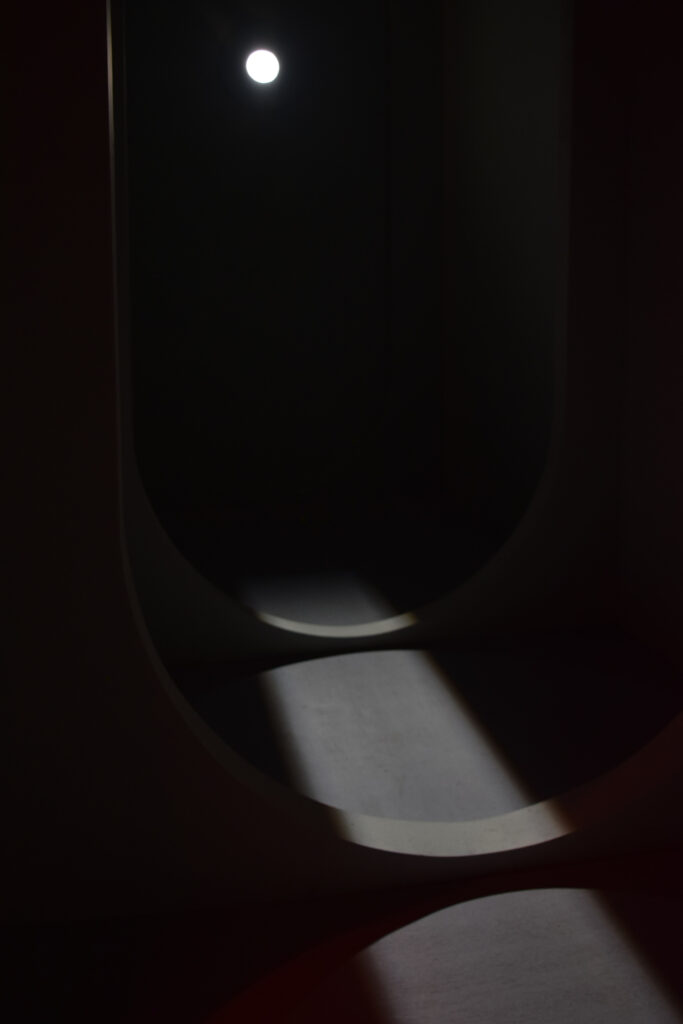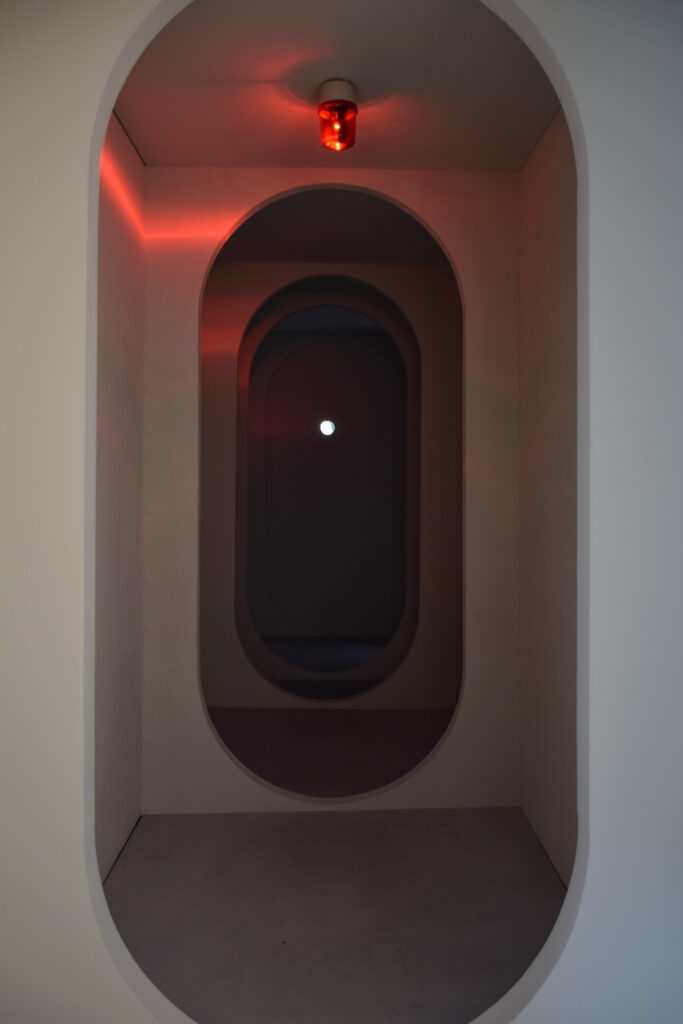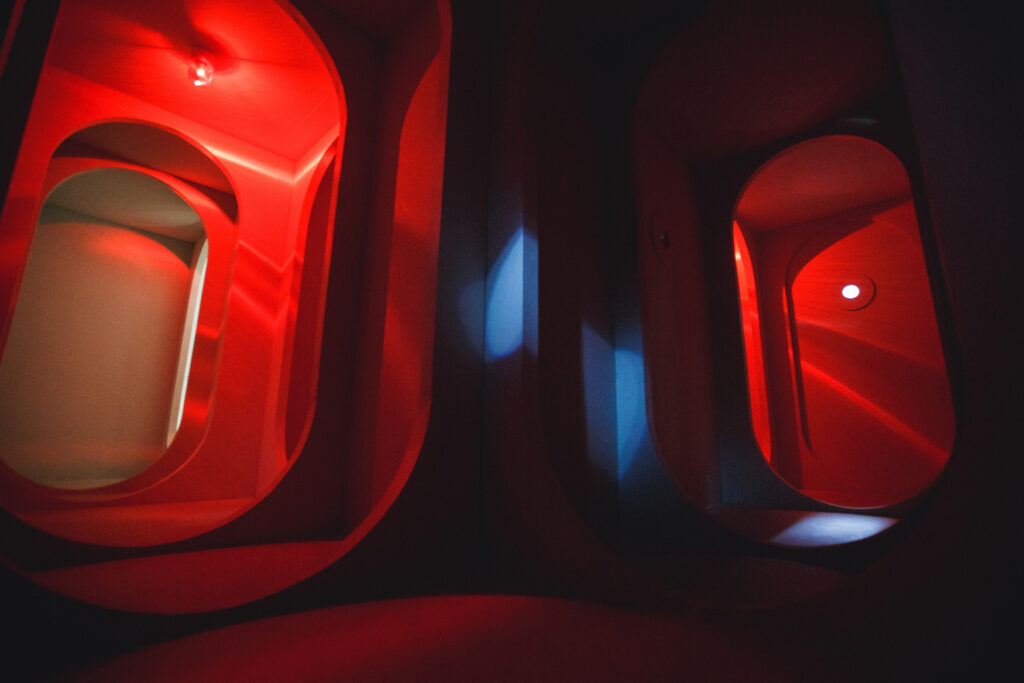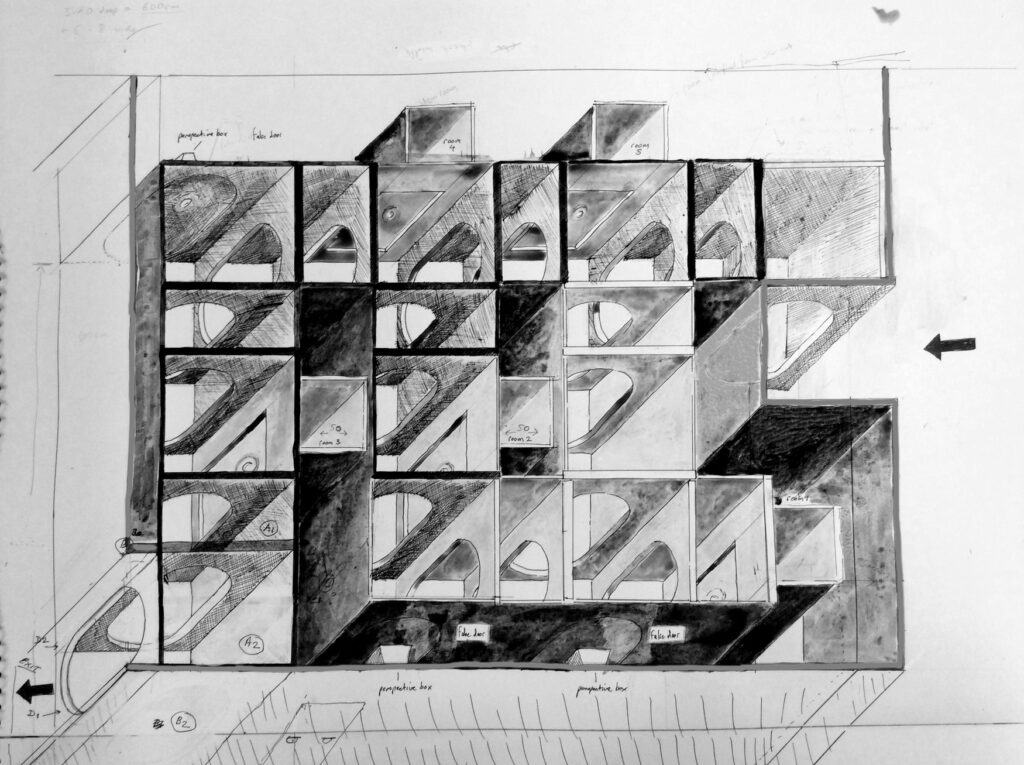Space Station (Station 3) – Duncan Mountford
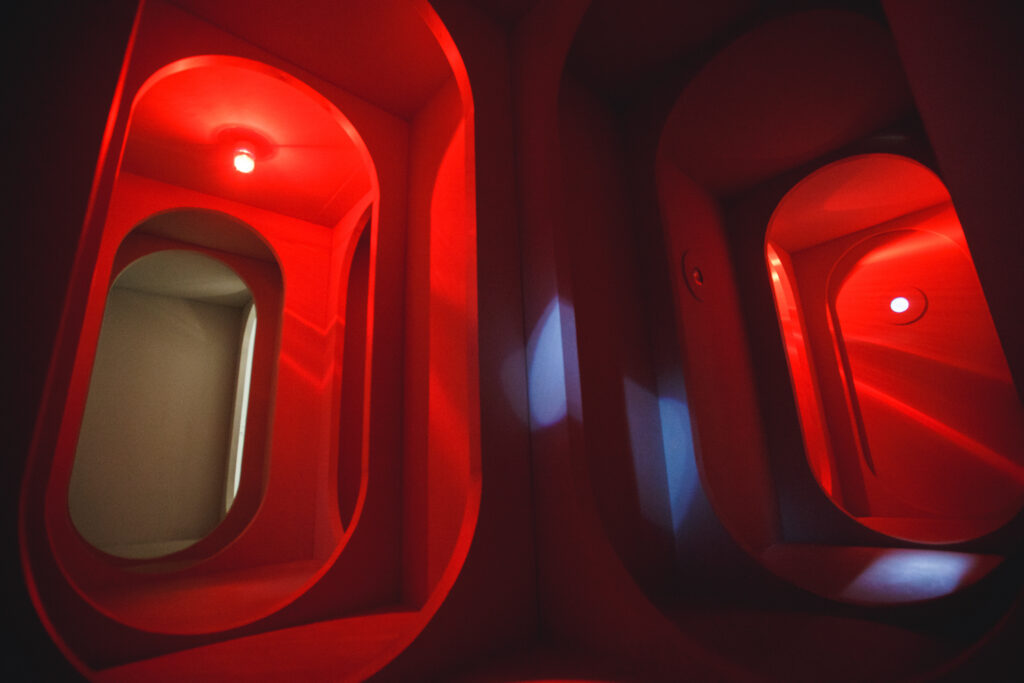
RG: Can you describe your work Space Station (Station 3)?
DM: The Space Station is the nightmare of being confined in corridors without end, doorways lead to doorways lead to doorways, red emergency lights flash, glimpses into further inaccessible spaces…an artificial voice intones numbers, a rumbling soundtrack. Taking inspiration from childhood watching of science-fiction tv (Classic Dr Who) there is the disjunction between the construction – painted plywood – and the de-centering experience of the interior as being somewhere else.
RG: How do you see your artwork connecting with or contributing to today’s society?
DM: I think the simple fact of making something that exists outside of the norms of capitalism, creating a thing not based on narrow definitions of value and profit, is an importance contribution, along with giving value and importance to ideas of creativity, play, experimentation, and critique. I try to make my work accessible, so that the theatricality of the work engages the viewer without recourse to reams of obtuse theory. Art is a question, and that does not exist without the presence of the viewer. I am wary of seeing artists as particularly gifted in contributing to society, everyone has that possibility with the use of imagination. Of those without imagination we should remain silent and watchful, and their names are Donald and Nigel.
RG: How does it feel for an artist whose work is labour-intensive and built upon a lifetime of research through reading to see the growing popularity of AI?
DM: There is a difference between using AI for useful purposes, and using it because essentially you are lazy. Recent research has shown that using AI for research, as opposed to reading books and thinking, has a measurable negative affect on the brain. We all need to stop using these shiny machines for everything, and then perhaps we can re-engage with nature and stop giving the bastards who own these things huge amounts of money.
Art being communication between people – we all spend way too much time pseudo communicating with machines these days.
How do themes of melancholy and loneliness in *2001: A Space Odyssey* and the sense of solitude depicted in Caspar David Friedrich’s painting *The Wanderer Above the Sea of Fog* influence your depiction of the space station? In what ways do these emotions shape the atmosphere, aesthetic, and narrative of your work?
RG: There is a lot of intellectual background in all your work, yet there is a lot melancholy and despair, let’s even say a hint romantic view on life. Even though it’s a lot about empty spaces, it’s very much about humanity and the unbearable confrontation of existentialism. Is that a conscious choice? And is there hope?
DM: Yes to all of that….It is both conscious and subconscious, it is who I am, perhaps influenced by my Roman Catholic upbringing (as my friend Moy often says). There is hope, even if we just laugh at the stupidity of the present world we can find hope….with paint and cardboard and words we can build worlds, with trillions of dollars Musk can only produce crap.
RG: Space Station is an installation where visitor can walk in and immerse in a moment of claustrofobic senstation. Can you tell us about the scale of the work and the art process?
DM: Although the Space Station was not large (600 x 800 x 220h) even when I was reconstructing it in the exhibition space I would get confused over the layout…something to do with the doorways I presume. The design of the doorways was influenced by the claustrophobic spaces of submarines. As with all my work the lighting was crucial, and the flashing emergency lights, being basic analogue constructions, would always run at slightly different speeds. I wish I could build it all again, but it was, like the best Space Stations, doomed to fall into the Sun.
